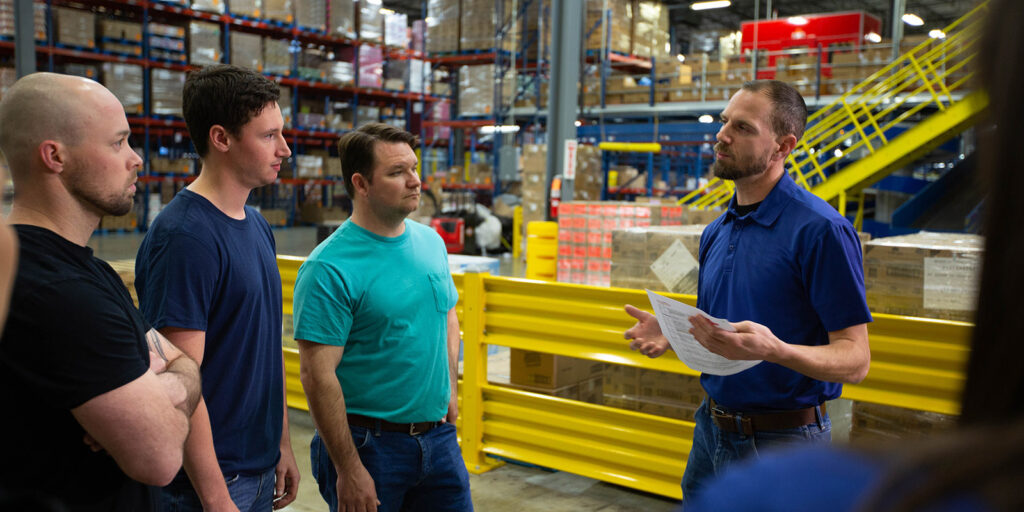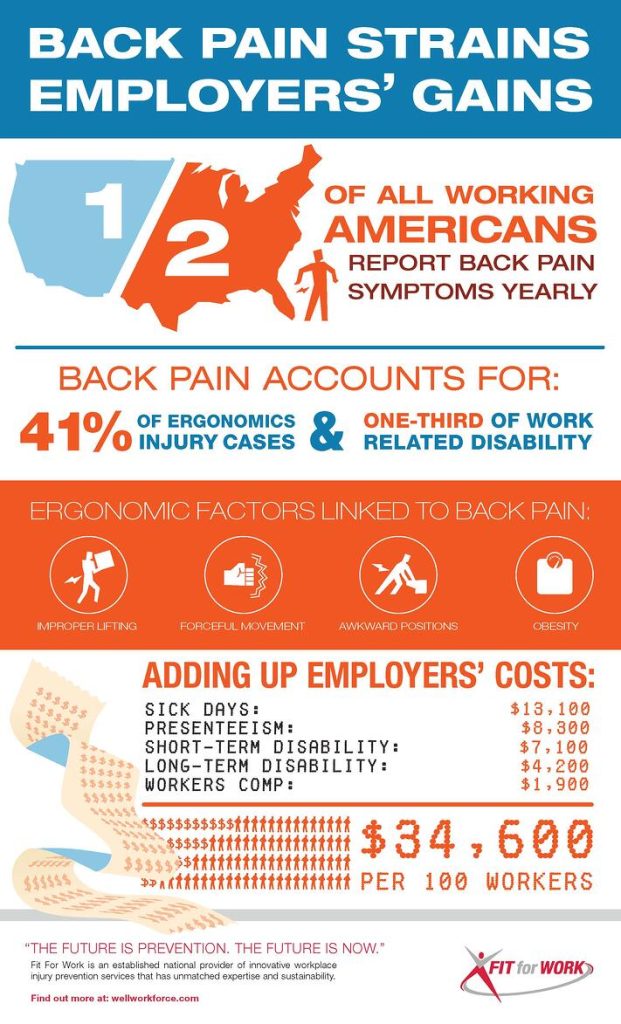By John Groves, DPT
Chief Executive Officer, Fit For Work
In the current economic climate, nearly every job class seems to be struggling to find enough workers to fill positions – and this is especially true for industrial production roles. Captivating and securing a high-quality candidate pool is a challenge in physical and repetitive environments where intensive labor and injury risk too often define the majority of positions.
To help sweeten the pot, employers have begun offering perks and benefits for blue-collar workers that had previously only been reserved for executives and senior-level parties. Benefits such as sign-on bonuses and flexible scheduling would have been unheard of for blue-collar positions a few years ago but have now become commonplace across many industries in order to attract new workers to these environments.
And while sign-on bonuses and other monetary perks usually emanate from companies’ HR departments, organizations are also starting to realize the role safety can play in attracting and retaining high-caliber talent . Financial and lifestyle incentives may have set the table, but employers are now recognizing that using safety to enhance the hiring experience for industrial production jobs can pay big dividends – and many are taking steps to do so.
Safety to differentiate your hiring experience
Using safety to improve the hiring experience and to attract and retain workers is a concept closely related to the importance of workplace culture. Now more than ever, employees want to be a part of something bigger than themselves. They want to know their efforts are making a meaningful impact and that their employer values them. And at the end of the day, no employer is going to be viewed as a world class employer if employees keep getting hurt.
Said another way, high-quality work and profitability simply do not correlate with too many injuries – and we’re finding that there is nothing like a tight labor market to shine a bright light on that issue.
Throughout our 25-year history and our current partnerships with over 1,500 employer sites across North America, we have curated some best practices for employers looking to use safety to win the hiring and retention war against your competitors. Here are six steps to optimize the new hire experience to attract and retain talent.
1. Clearly define the job
In order to hire the right workers for the right positions, you first need to clearly define the role for which you are hiring – including the physical demands of the job. This is relatively easy to do and starts with a physical demands analysis (PDA), which works to identify the physical requirements of a role to help ensure candidates are capable of performing effectively while also reducing injuries.
Physical requirements may include manual material handling, any body positions and movements the employee will be in/perform, any environmental considerations, and more. By clearly defining what a role entails regarding the body, employers are able to more accurately navigate the hiring process to bring aboard workers who will succeed in both the short and long term.
2. Expand the candidate pool through Ergonomics
Another key component of improving the hiring process is implementing Post-Offer testing – a step that the PDA helps critically inform. Once the PDA identifies the physical demands of a position, it is used to create job-specific tests that help ensure candidates can perform the physical requirements of the essential functions of the job. It’s here that Ergonomics can play a key role in expanding the candidate pool .
By implementing ergonomic improvements throughout the worksite, we are able to reduce the physical demands of positions, which can then increase the percentage of the population that can safely perform in a given role. Without ergonomic improvements, only those fully capable of performing in a highly demanding role could be viewed as eligible candidates. Now, the talent pool is widened as demands are decreased.
3. Bring Post-Offer testing onsite
Post-Offer testing in any capacity certainly has its advantages, but bringing testing onsite sees these benefits grow exponentially by helping compress the hiring process. The majority of testing with other providers takes place in an offsite, clinic-based setting, where tests may be delayed for days due to scheduling constraints.
Bringing this step onsite allows testing to be performed during dedicated hours without competing for time, space, or attention at a busy offsite clinic. Onsite testing allows more candidates to be tested and can deliver results immediately. Our onsite employment testing process has helped to reduce hiring timelines by over 40% .
4. Use Training Camps to help onboard employees
Training camps can also help acclimate new hires to your unique working environment, in addition to promoting a good first impression that can set the stage for employee loyalty and retention. New Employee Training Camps from Fit For Work are focused, functional training setups adjusted to the needs of your organization to help new employees successfully enter the atmosphere of the organization.
This is achieved by reproducing the specific conditions under which the new hires will be working. Repeated functional practice and training helps make sure that correct work habits are formed, normal soreness associated with moving in new ways is promptly addressed, and workflow is optimized for both safety and productivity. With the addition of training camps, our clients have seen the time necessary to bring a new hire up to full productivity/performance reduced by over 25%!
5. Create a culture of safety
Implementing these strategies not only helps expand the hiring pool and improve the hiring and onboarding process, but it also helps create a true awareness and connection between your people and your safety program.
The more ingrained safety is within your culture, the more capably you’ll be able to navigate compliance challenges while infusing new and best-in-class processes for preventing MSDs. In all, the thoroughness of a comprehensive safety program spills over into many other areas of your organization – many of which you likely never would have anticipated.
6. Leverage onsite Early Intervention
Onsite Early Intervention is at the core of Fit For Work’s offering, placing Injury Prevention Specialists directly in your environments to work one-on-one with employees to prevent injuries from occurring.
Through Early Intervention, the Injury Prevention Specialist is there to ensure all employees can receive 1:1 in-person attention to uncover the three leading indicators to a musculoskeletal injury: early soreness, ergonomics, and behaviors, thus keeping your workforce happy, healthy, and productive (and employed by your organization!).
Contact us today to learn more about hiring and retaining high-caliber workers through the use of a turnkey and tailored comprehensive safety program.





